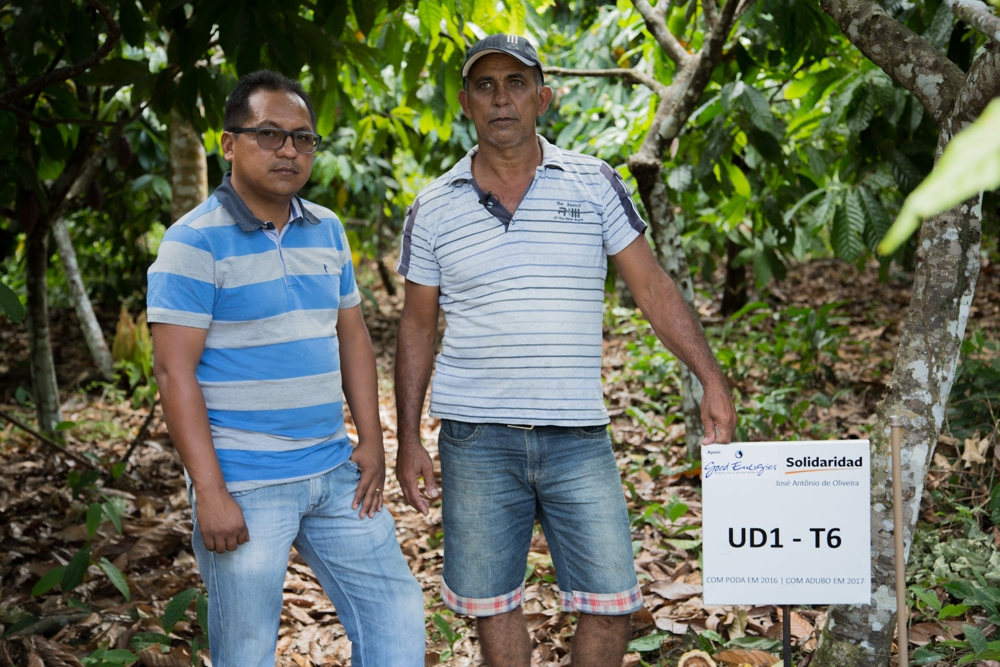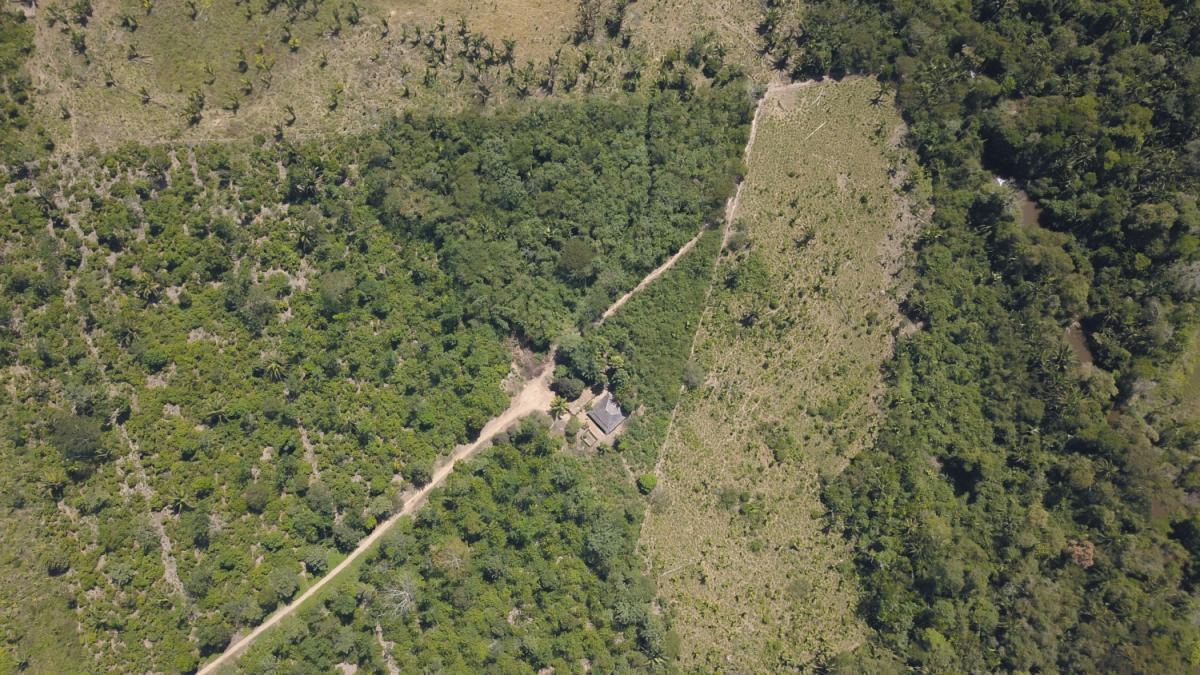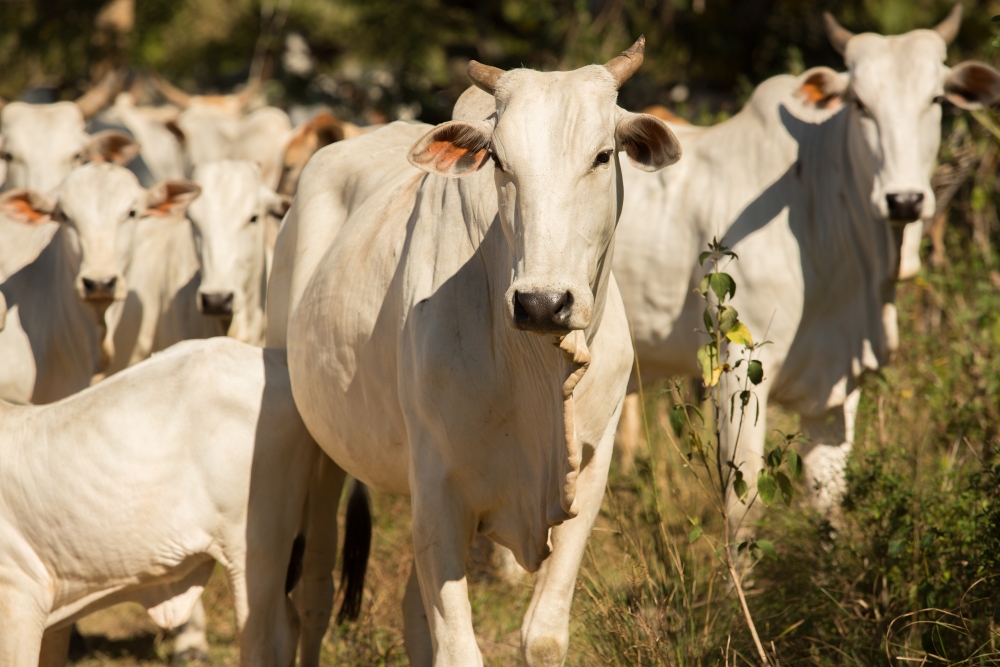
The importance of smallholders
According to the Brazilian Institute of Statistics and Geography, 70% of food consumed in Brazil is produced by smallholder farmers. The significance of family farming for the national economy and food security is reflected in the latest national agricultural census. Family farmers produce 60% of milk, 30% of cattle, 70% of beans, 46% of corn and 34% of rice consumed in Brazil. Family farming accounts for 40% of the economically active population of the country and employs 74% of the rural workforce.
Nowadays deforestation is concentrated on the frontier of farmland and forest, particularly in areas where smallholders farming soy, livestock and oil palm predominate. Despite this scenario, efforts to measure and reduce GHG emissions in Brazilian agriculture have focused on industrial-scale arable and livestock farming. Solidaridad, supported by Good Energies and the Dutch government, has taken up the task of identifying the best way to include small farmers in climate-smart solutions. According to PRODES (Brazilian Amazon Forest National Satellite Monitoring System ) after a achieve the lowest rate in Deforestation in 2012, the rates are continuously increasing in the Amazon, and also in the project area, even though in term of hectare it corresponds to 2.840 km2 in 2018, it is 17% more than 2017. The ultimate goal is to build an inclusive and sustainable landscape of governance in the Amazon so that forest conservation and restoration is more profitable than clearing the land and the role of smallholders in mitigation strategies is taken into account. An innovative model is needed that provides solid economic incentives to avoid farm deforestation.
Learn more about the challenges and interventions in the Pará project through this video.
The business case for climate-smart models
In March 2018, Solidaridad and its partner organization, Imaflora, published a study that assessed carbon balance in systems that produce livestock (around 50% of farmland) and cocoa (20%) while maintaining 25% as forest land.
>> Read the executive summary and download the complete study (in Portuguese)
The study presented six different scenarios, including business as usual and improved management. Of these, the most effective were those that integrated livestock and cocoa in agroforestry systems, made improvements to agricultural practices, restored degraded pastures and avoided deforestation, leading to a carbon balance of -113 tons of CO2 emissions/year. This is a decrease in GHG emissions of 65 times against baseline and a huge improvement on the ‘business as usual’ scenarios, where deforestation amounted to more than 400 tons of GHG emissions per year.

Solidaridad’s recent results from the field have shown that this model is economically viable for family farmers. Investing in productivity and more sustainable intensified systems is essential to increase economical viability and prevent slash-and-burn practices.
The yearly gross revenue of a plot with livestock alone in the project increased to R$18,000 (approx. 4,000 EUR) while the gross revenue of a plot that integrated livestock with cocoa was R$95,856 (approx. 22,000 EUR), which represents a 31% increase. Besides the livestock and cocoa integrated system, the growing cocoa alongside other species in agroforestry systems showed a 260% increase in profits compared to cocoa as a monoculture.
In other words, this model gives farmers economic incentives to avoid deforestation.
Integrated models are more profitable for several reasons:
-
Efficiency. Cattle and cocoa both generate income from the same farmland.
-
Diversification. Having more than one type of economic activity stabilizes family finances.
-
Land recovery. Agroforestry models with cocoa can be established on degraded lands by overgrazing, making the land productive again and restoring the soil.
-
Intensification. More head of cattle can be reared per hectare.
-
Increased productivity. Good practices increase the fertility rate in livestock and the productivity rate in cocoa by 34%.
-
Market incentives. Demand is high for sustainable cocoa and increased quality provides access to differential markets. For example, while the price of a kilogram of cocoa in the normal market is R$7.85, the price of high-quality beans in the “bean to bar” market is R$33/kg.
>> Read more on “bean to bar” chocolate made from smallholder beans at the salon du chocolat
The ecologically sound case for integrated models
If integrated livestock, cocoa and forest systems are adopted on 4,000 farm units with around 50 hectares each, the improvements to efficiency and sustainability have the potential to mitigate GHG emissions by 454,800 tonnes per year. This could turn the Transamazônia region into a carbon sink. – Joyce Brandao – Solidaridad Programme Manager Sustainable Production
As well as being an incentive to avoid deforestation, the profitability of integrated models could also benefit those producers that are required by law to restore forest land. Cocoa is a native species of the Amazon that can be grown among other native trees. It benefits from the presence of other species that provide shade and add flavour notes to beans, while the revenues help producers recover the investment made in restoration.
By restoring 13,000 hectares of forest land, smallholders who participate in the programme can contribute towards new biodiversity corridors for more than 40 species, thereby improving environmental governance.

Partnerships to improve speed and scale
Civil Society Organizations play an important role in providing information for core actors so they can make informed decisions and develop solutions that can be leveraged by the private and public sector.
Increased productivity and profitability linked to low carbon practices can help change the mindset of producers who see forests as mere liabilities. Nevertheless, much work needs to be done to deconstruct the beliefs that sustain ‘business as usual’ practices, such as the belief that more land equals more income – Joyce Brandao – Solidaridad Programme Manager Sustainable Production
The region also needs to tackle its lack of basic infrastructure such as roads, support services and technologies.
As we work to bring climate-smart agriculture to speed and scale, the next steps in our intervention model will be to develop and implement:
-
ICT tools for continual improvement in sustainable sourcing and landscape governance;
-
Hubs of learning and innovation to build local capacity in integrated technical assistance for the Amazon region;
-
Mult
i-stakeholder agreements that support environmental compliance on farms and access to finance for small producers; -
Commitment from markets.
Nestlé and the Brazilian Association of Cocoa Processors Industry (AIPC), Cargill, Barry Callebaut and Olam, are already on board and have committed to more responsible sourcing in the region while increasing the volume of cocoa produced. However, we still need more indications from market players that sustainability in the supply chain matters to them and that they are willing to play their part in developing a low carbon economy in the Amazon.
Learn more about sustainability in South America
This is the first article in a series on deforestation and poverty. Deforestation is responsible for 15% of the world’s greenhouse gas emissions. With the support of the Good Energies Foundation, Solidaridad is working in three key forest biomes to reduce deforestation: the Amazon in Brazil, the Malay Archipelago in Indonesia and the Congo Basin. Small farmers have a large role to play in saving our forests in these areas. Solidaridad works with communities in these tropical forest regions to tackle poverty and deforestation.
Part 2:
Made possible by:

